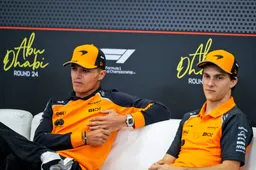Did Verstappen go too far in his criticism of Red Bull and Lambiase? Horner responds
19:13, 21 Jul 2024
3 Comments
It was a frustrating day for Red Bull Racing at the Hungaroring. The Austrian Formula One team saw neither driver finish on the podium, despite the updates it had introduced to the RB20. Team boss Christian Horner therefore fully understands Max Verstappen's frustrated radio messages towards his team.
Horner understands angry reaction Verstappen
After the F1 race, Horner is asked if he thought the radio communication between Verstappen and his race engineer Gianpiero Lambiase went too far. "Max was frustrated, which is understandable. He has a direct line of communication with his engineer. This is something they discuss together," the team boss explained.
The Dutchman did not hold back, not shying away from foul language. Whether Horner will discuss that with his driver, he would not say. " I don't think that's something for the media," the team boss replied to a question from GPblog. "Everyone sees that we need to perform better. Everyone is working hard on that. We will have all discussions behind closed doors."
Horner helps clear up misunderstanding: 'GP was not talking about Max'
At one point, radio communication between Verstappen and Lambiase seemed to escalate somewhat when the engineer said it was "childish" to complain about the collision with Lewis Hamilton via board radio. Horner wants to nip possible misunderstandings about this in the bud, as he says the comment was not directed at Verstappen.
"I don't think GP was talking about Max at that moment. I think he was referring to others on the radio complaining about penalties. I don't think GP was referring to Max at that moment," the Red Bull team boss clarified.
"Others are clearly going for penalties, because clearly the stewards also listen to the radio. They [Verstappen and Lambiase] have been together for eight years. There are things we could have done better in the race today. But that is something we will talk about as a team," Horner said.
This article was written in collaboration with Ben Stevens.
Read more about:
Popular on GPBlog

1
Ferrari end short-lived driver partnership after one-year spell
1793 times read

2
Alonso spotted on track in ultra-premium Adrian Newey-designed car
909 times read

3
Future extremely uncertain; an abrupt exit looms for this F1 driver
664 times read

4
Villeneuve cuts through McLaren papaya rules debate with four-word line
456 times read
Loading













